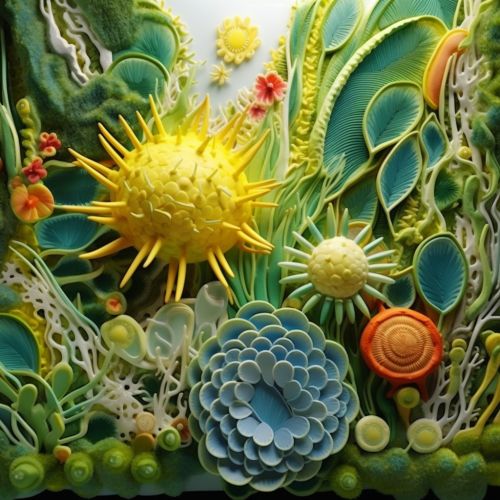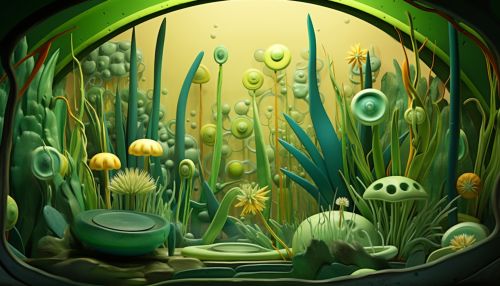C4 carbon fixation
Overview
C4 carbon fixation or the C4 photosynthetic pathway is a process used by plants and other organisms to capture carbon dioxide (CO2) from the atmosphere, which is then used to produce energy-rich molecules like glucose. This process is one of three known photosynthetic processes of carbon fixation in plants, the other two being C3 carbon fixation and CAM photosynthesis.
Biochemistry of C4 Carbon Fixation
The C4 carbon fixation process is named for the 4-carbon compound that is the first product of carbon fixation in the process, oxaloacetic acid. This process involves the enzyme Phosphoenolpyruvate carboxylase (PEP carboxylase), which catalyzes the reaction of phosphoenolpyruvate (PEP) with carbon dioxide to form oxaloacetic acid.


Evolution of C4 Carbon Fixation
The C4 carbon fixation pathway evolved as an adaptation to high light intensities, high temperatures, and dryness. It is believed to have evolved more than 60 times independently in various plant lineages, making it a classic example of convergent evolution.
C4 Plants
Plants that use the C4 carbon fixation process are known as C4 plants. These include several thousand species in at least 19 families of plants, including the family Poaceae (grasses), which contains important crops such as maize, sugarcane, and sorghum.
Advantages and Disadvantages of C4 Carbon Fixation
C4 carbon fixation has several advantages over the C3 pathway, particularly in conditions of drought, high temperatures, and nitrogen or CO2 limitation. However, it also has some disadvantages, such as the requirement for additional energy in the form of ATP.
